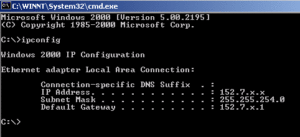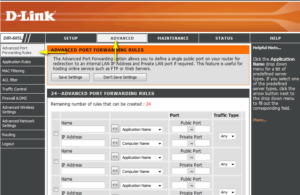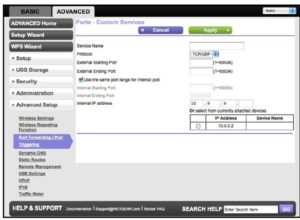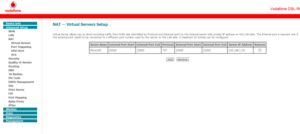Of course, you can be satisfied with the virtual reality on the phone or wait for the new VR PlayStation to reveal some news when it comes out at the end of the year. But if one wants it all right away, and is not content with solutions for a short time, as well as a great PC with an even better graphics card, it will be necessary to have a viewer that is up to it. That is, nowadays, Oculus Rift or HTC Vive.
Both are already available on the market, provided you know how to support a line for several hours, both relate very well to a computer of good power, and despite this, of course, there are several differences more or less obvious between the two products. The first, the one that immediately jumps to the eye, is the price: $ 599 for the first, 799 for the second. But we know that the price is not everything, so let's see in detail what the substantial differences between the two products are.
HTC, however, wins the wide-ranging confrontation. In fact, if the virtual reality was perceived only by sight and hearing would win the Oculus, but HTC also provides a glove for tactile sensations, while an advanced sensor allows us to move in the real world without doing damage. At the dive level, there is no comparison.
Winner: HTC Vive
HTC, on the other hand, has two built-in sensors that make it possible to hear what we touch, when pulling the trigger. The two sticks will become, in virtual reality, guns, phantom hands or other. You can move in a diagonal up to 6-7 meters to interact with the environment. and every movement will be translated into virtual reality, allowing a total immersion. We expect even better for the near future, but there are not enough rumors about the upcoming releases.
Winner: HTC Vive
Much more compact and functional, with an even easier cable to connect to the PC. It adapts more easily to the face, and does not press too much on the glasses. Plus, it has excellent ventilation. All the opposite of the HTC, very cumbersome, and with a cable that goes down the back and seems always on the point of tangling at our feet, making us feel embarrassed. The experience deserves, but it is still a big malus.
Vincitore: Eye Rift
You also need to place and calibrate two laser projectors, and clear your room to avoid accidents. Once entered on Steam, you need to enter the VR set, turn on the controls and the control unit, and adjust the helmet.
On the contrary, with the Oculus you just have to tinker with a couple of cables, and you do not need to launch software or continuously re-adjust your helmet to start with. Everything is much more practical, and just put on a helmet to start the experience.
Vincitore: Eye Rift
But in the long run, HTC will probably win, which features the Valve technology also used by Steam. This also allows a better performance of the multi-player and the possibility of inviting friends to play. Considering the speed at which Steam introduces new products to the market, and the ongoing investments both HTC and HTC are doing,
Oculus is likely to be soon doubled. Not to mention that the technology of the controls are light years ahead of the competitor.
Immersion
With the helmet on his head, you are projected into a totally new world. But what makes the difference for us is the way in which this world is perceived as real. Regarding the audio and video quality, both brands give excellent performance, although it must be emphasized that the Oculus has built-in headphones, which makes it much more comfortable.HTC, however, wins the wide-ranging confrontation. In fact, if the virtual reality was perceived only by sight and hearing would win the Oculus, but HTC also provides a glove for tactile sensations, while an advanced sensor allows us to move in the real world without doing damage. At the dive level, there is no comparison.
Winner: HTC Vive
Interaction
Can we live in virtual reality, but also interact with each other? Both systems have a position tracker so you can make simple movements like leaning out to look one thing better, or dodge a phantom virtual cake. But the Rift still needs the support of a console joystick that comes with the device. For something more advanced, we will have to wait until the end of the year.HTC, on the other hand, has two built-in sensors that make it possible to hear what we touch, when pulling the trigger. The two sticks will become, in virtual reality, guns, phantom hands or other. You can move in a diagonal up to 6-7 meters to interact with the environment. and every movement will be translated into virtual reality, allowing a total immersion. We expect even better for the near future, but there are not enough rumors about the upcoming releases.
Winner: HTC Vive
Comfort
Last minute news: the virtual reality helmet is uncomfortable. The equivalent of having a giant diving mask on the head if possible, even more cumbersome. But here we must definitely take the parts of the Oculus.Much more compact and functional, with an even easier cable to connect to the PC. It adapts more easily to the face, and does not press too much on the glasses. Plus, it has excellent ventilation. All the opposite of the HTC, very cumbersome, and with a cable that goes down the back and seems always on the point of tangling at our feet, making us feel embarrassed. The experience deserves, but it is still a big malus.
Vincitore: Eye Rift
Setup
Mounting a VR device is certainly not easy. You have to set up many variations, download games and spend hours arranging everything. But with HTC this experience is even worse. Not only does it come with a load of cables to kill a horse (three power adapters, two USB chargers, more video, USB and sync cables).You also need to place and calibrate two laser projectors, and clear your room to avoid accidents. Once entered on Steam, you need to enter the VR set, turn on the controls and the control unit, and adjust the helmet.
On the contrary, with the Oculus you just have to tinker with a couple of cables, and you do not need to launch software or continuously re-adjust your helmet to start with. Everything is much more practical, and just put on a helmet to start the experience.
Vincitore: Eye Rift
Ecosystem.
Oculus has literally spent capital to secure a future like the next avant-garde computer platform, as developers know that they are paid for by weight. For the same reason, there are dozens of games that you will find available for OR, but not for HTC phones. Not only that, the games of the first are generally much more complete and complex, so as to make those of the second little more than demo.But in the long run, HTC will probably win, which features the Valve technology also used by Steam. This also allows a better performance of the multi-player and the possibility of inviting friends to play. Considering the speed at which Steam introduces new products to the market, and the ongoing investments both HTC and HTC are doing,
Oculus is likely to be soon doubled. Not to mention that the technology of the controls are light years ahead of the competitor.
Winner: HTC Vive
Despite this, it is not said that Oculus can not redo in the fall when finally the new advanced controller will come out, the lack of which still marks the distance between the two in an abysmal manner. Sensors that detect thumb and forefinger movements will allow you to make more complicated gestures with your hands, and the new camera should allow you to move naturally around your surroundings.
But frankly, with the advance of new houses and programs more and more complicated and defined, there is no even to worry, soon there will be too many choices for fans of virtual reality!
Who wins?
As evidenced by the article, clearly HTC Vive. Although more cumbersome, difficult to assemble, and much more expensive, the experience it offers is such that you immediately forget all these details.Despite this, it is not said that Oculus can not redo in the fall when finally the new advanced controller will come out, the lack of which still marks the distance between the two in an abysmal manner. Sensors that detect thumb and forefinger movements will allow you to make more complicated gestures with your hands, and the new camera should allow you to move naturally around your surroundings.
But frankly, with the advance of new houses and programs more and more complicated and defined, there is no even to worry, soon there will be too many choices for fans of virtual reality!










